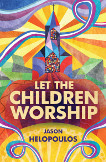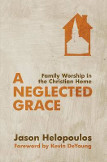
7 Tips on Teaching and Preaching the Old Testament
“Do you have any tips on things that might be helpful in teaching through the Old Testament, or potential pitfalls?”
That’s the question I was recently asked via email and I thought it might be profitable to share the answer here.
1. Focus on the Original Message
One of the biggest mistakes in Old Testament preaching is to think that these books were written only for us. They were written for us, but only in a secondary sense. They were originally written for Israel and therefore we have to ask first, “What was the message to Israel.” What problem was this book addressing? We often do this with New Testament books and letters, but for some reason that step is often skipped in Old Testament preaching. Once we get the original message to the original audience, it is so much easier to go from that to the present message to the present audience. Richard Pratt’s He Gave Us Stories is a great book for learning this skill.
2. Learn Old Testament History, Geography, and Culture
This is really linked to the first tip because you cannot figure out the original message to the original audience without first knowing the historical, geographical, and cultural setting. There are many “Introductions to the Old Testament,” or study Bibles like the ESV Study Bible, the Spirit of the Reformation Study Bible, or the Reformation Study Bible, that give excellent summaries that set each book in its context.
We can’t assume that people know anything today about Old Testament books. We’ve got to do a lot of education before we get to edification. Because of that, it’s probably best to start with the familiar stories and passages, because that will need less background information. Which demands that we…
3. Develop the skill of summarizing and modernizing
As I’ve said, one of the biggest mistakes in Old Testament preaching is to ignore the original setting. However, another mistake is to get totally bogged down in the original setting. Many Old Testament sermon have failed to lift off because the preacher turned his hearers into snorers as he droned on about the Gibeonites or the date of the Exodus.
We need to give our hearers the background information that honors the original setting, but we must learn how to do it with brevity and relevance. By that I mean we must learn how to summarize the history, geography, etc., giving enough information without drowning in detail.
And we must make it relevant by showing what that would look like in our own day. Try to imagine and describe the situation using modern nations and situations to engage the listeners and draw them in to the ancient setting.
4. Vary Your Genres
As very few preachers can sustain a consecutive expository series of sermons through an Old Testament book, I would recommend doing short series of maybe 3-4 sermons in one book, before moving on to another. So maybe you would do a few sermons on Abraham, two or three Psalms, then perhaps some prophecies, some obvious types, etc. By doing this, you are helping people to build a big picture of the Old Testament, rather than becoming limited experts in just one book.
Once you’ve managed, over a few years, to lay the foundations of the redemptive-historical timeline, then you can perhaps linger for a while in one book. But even when doing a series on the Old Testament, I like to break it up regularly and refresh myself and my hearers with New Testament sermons.
5. Ask Two Questions
There are many questions to ask of Old Testament texts, but the two most important are: (1) What did this passage teach Israel about God? and (2) What did it teach them about God’s way of salvation?
We have to assume that Israel read the Scriptures the same way as we did – wanting to learn about God and how to be saved. So ask, “What did they learn about God and salvation from this passage?”
6. Balance Moral Lessons and Christocentric Interpretation
Avoid the extremes of either making all your Old Testament sermons about following (or avoiding) the examples of the Old Testament characters, or of making all your Old Testament sermons theological flyovers that land finally in Christ but never impact the spiritual lives and ethics of your hearers. Old Testament sermons should have both emphases, although sometimes a sermon will have more of one than the other.
7. Remember that Old Testament Believers were Believers
Sadly, many view Old Testament believers as pretty mixed up people. The most common view I come across is that they were theists--i.e. that they had a fairly general faith in God (not in the Messiah), which they topped up with a mixture of sacrifices and good works.
If that’s the case, then we really can’t learn anything from them because God has two ways of salvation, and there are going to be two very different kinds of people in heaven--those saved by grace and those saved by an amalgam of faith, works, and sacrifices. Not exactly a recipe for harmonious fellowship is it!
Although the Old Testament believers did not have as much light or clarity as we do, Hebrews 11 and other passages teach that they were still saved by faith alone, in the Messiah alone, to the glory of God alone.
Related Resources
David Murray Jesus on Every Page
E.J. Young An Introduction to the Old Testament
William Henry Green General Introduction to the Old Testament
William Henry Green Prophets and Prophecy
William Henry Green Old Testament Literature



















 © Alliance of Confessing Evangelicals
© Alliance of Confessing Evangelicals


